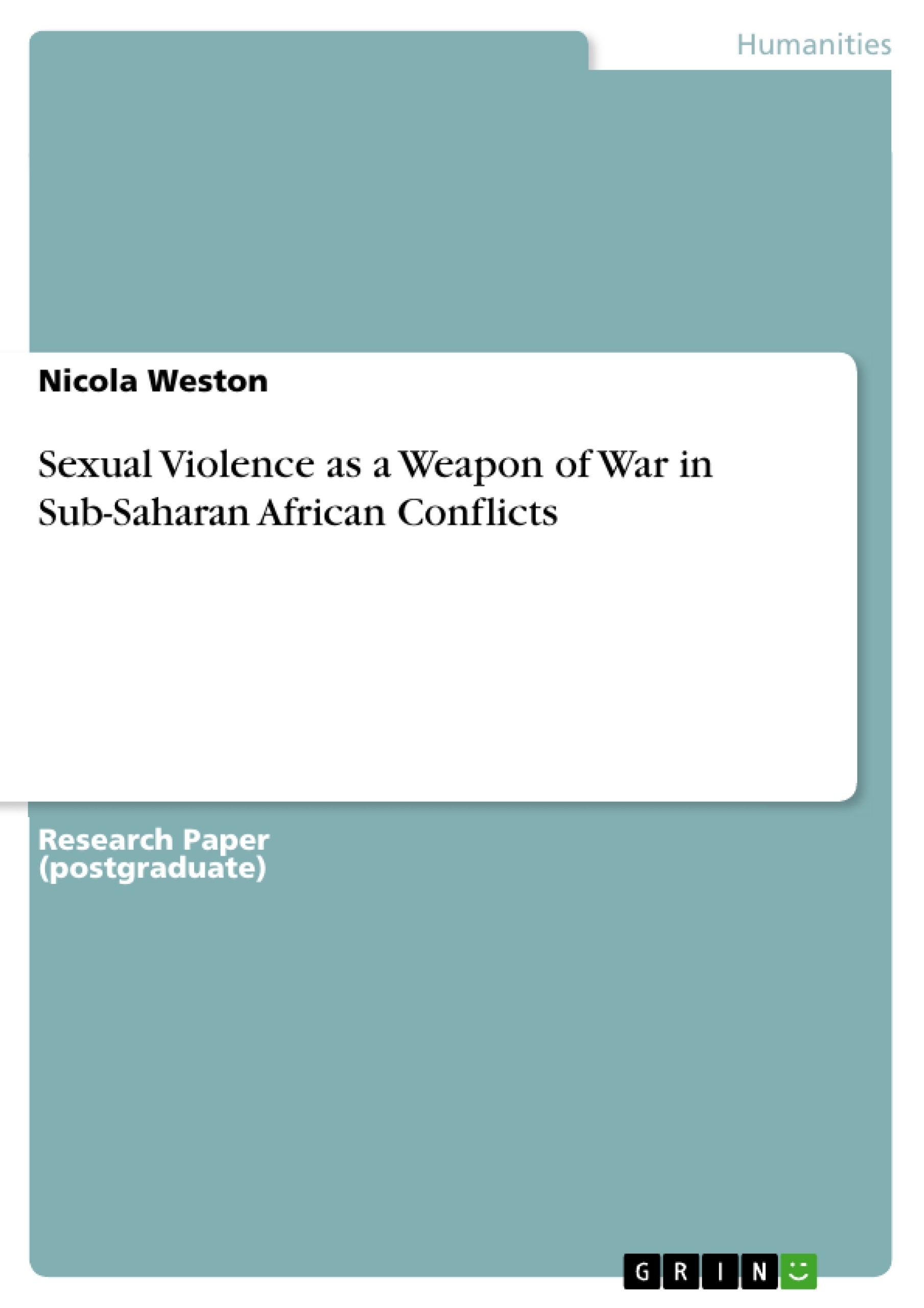Gender based violence (GBV) is a complex, multidimensional problem which the World Health Organisation (WHO, 2005) describes as a ‘universal phenomenon’. So much so, that GBV is recognised as a serious human rights and public health problem that concerns all members of society, (Murray and Lopez, 1996, Inter-Agency Standing Committee, 2005). Subsequently, GBV has been incorporated into the Millennium Development Goals, where reducing GBV will have a direct effect on achieving Goal three; the promotion of gender equality and empowerment of women. This issue has gained international attention, as a direct result of civil conflicts in Bosnia and Rwanda, where human rights abuses were seen violated on a magnitude never before recorded and described as acts of genocide, (United Nations Security Council, UNSC, 1999). In Rwanda, it is thought that about 500,000 women were raped by Hutu militia, (Human Rights Watch, 1996). Further atrocities have been documented in Sierra Leone, where approximately 50,000 to 64,000 internally displaced women have reported war-related sexual assaults (Physicians for Human Rights, 2002). In Kenya, following the disputed presidential elections in 2008, violence erupted which saw acts of sexual violence (SV), such as, gang rape and mutilation. United Nations (UN, 2007) reports suggest that 27, 000 rapes occurred in one region of the Democratic Republic of Congo (DRC) in 2007. SV has been predominant in many other conflicts such as in Uganda (Giller et al, 1991) and Sudan (Amnesty International, 2004).
Research on this area tends to use the terms GBV and SV interchangeably and cannot be explored fully in this paper. There is limited research focusing on violence against males, and therefore this paper will concentrate on SV against women specifically. This paper will discuss why SV has become part of warfare in Sub-Saharan Africa and then examine the treatment programmes aimed at survivors, in particular focusing on the barriers to effective implementation of programmes.
Inhaltsverzeichnis (Table of Contents)
- Introduction
- Sexual Violence as a Weapon of War
- Prevalence of Sexual Violence
- Impacts of Sexual Violence
- Sexual Violence as a Strategy
- Impacts on Gender Inequalities
- Barriers to Effective Implementation of Sexual Violence Programs
- Challenges in Seeking Help
- Informational Barriers
- Gender Inequality and Stigmatisation
Zielsetzung und Themenschwerpunkte (Objectives and Key Themes)
This paper examines the use of sexual violence as a weapon of war in Sub-Saharan African conflicts and explores the barriers preventing the effective implementation of programs designed to aid survivors. The primary objective is to shed light on the complex dynamics of sexual violence within conflict zones and the multifaceted challenges faced in providing adequate support to victims. * The use of sexual violence as a strategic weapon of war in Sub-Saharan Africa. * The prevalence of sexual violence across various conflicts and its devastating impact on individuals, communities, and societies. * The multifaceted barriers hindering the effective implementation of sexual violence programs, including cultural and societal norms, limited access to healthcare, and lack of comprehensive training for healthcare workers. * The importance of gender equality and addressing societal stigmatisation to facilitate access to healthcare and support services for survivors. * The crucial role of community-based programs in tailoring intervention strategies to meet the specific needs of diverse communities and cultures.Zusammenfassung der Kapitel (Chapter Summaries)
The paper begins by highlighting the widespread prevalence of gender-based violence, including sexual violence, in Sub-Saharan Africa. It then delves into the deliberate and strategic use of sexual violence as a weapon of war, outlining its devastating impacts on individuals, communities, and the broader social fabric. The paper examines the key factors contributing to the perpetuation of sexual violence, including cultural norms, gender inequalities, and the breakdown of social structures in conflict zones. The second part of the paper focuses on the barriers hindering the effective implementation of programs aimed at supporting survivors of sexual violence. The paper discusses the challenges faced by victims in seeking help, including limited access to healthcare, fear of stigmatisation, and cultural barriers. Additionally, it highlights the critical need for comprehensive training and support for healthcare workers to effectively respond to the specific needs of survivors.Schlüsselwörter (Keywords)
Sexual violence, weapon of war, Sub-Saharan Africa, gender-based violence, conflict, barriers, program implementation, healthcare access, cultural norms, stigmatisation, community-based programs, healthcare workers, gender inequality, survivors.- Quote paper
- Nicola Weston (Author), 2010, Sexual Violence as a Weapon of War in Sub-Saharan African Conflicts, Munich, GRIN Verlag, https://www.grin.com/document/171883



